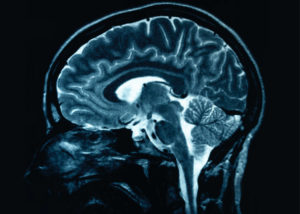For many, the holidays become synonymous with stress: finding the perfect tree, having the perfect decorations, finding the perfect gift, and spending time with family. These things can quickly turn holiday cheer into holiday drear. However, there are ways to reduce the stress that can come along with all the holiday hustle and bustle.
- Set a budget, and stick to it (even if your budget is free). Send a heartfelt card, make something, offer to help someone else. Gifts don’t have to be material, and often the more heartfelt gifts will be remembered the longest.
- Plan ahead and don’t spread yourself thin. Make a list, divide and conquer, delegate to other family members. You don’t have to do everything. Remember, it’s okay to say no. Scheduling conflicts will occur. That’s okay. Things will not go as planned. That’s okay.
- Set realistic expectations and don’t strive for perfection. Things will not always go as planned. Sometimes dinner gets burnt, sometimes the cat knocks over the tree, sometimes it snows (or it doesn’t). Sometimes important people aren’t able to make it. It’s okay. Don’t stress over what you cannot control. Do what you can and nothing more. Are there important people who you can’t spend time with? Find ways to keep everyone included. Take pictures, make a phone call, or send a video.
- Accept people for who they are. Agree to disagree. Acknowledge your feelings and realize it’s ok to not be okay. Holiday events are not the time to hash out disagreements. Learn to accept others and forgive past transgressions.
- Remember to take care of yourself. Give yourself 15 minutes to do something alone. Remember to maintain your healthy habits. This includes exercising, eating healthy, meditating, whatever it is you typically do, keep doing it! Try to give yourself a day of rest before returning to your daily routine.
- Get additional support. Reach out to friends, attend community events, volunteer, or seek out professional assistance if needed. Don’t isolate yourself.
Not every get together will look like a Hallmark card. Not every family interaction will be like they are in the movies. Remember, this is real life. And in real life, it is what you make it…even if that means allowing things to be perfectly imperfect.
References
5 Tips for Managing Holiday Stress. (2016). Retrieved November 24, 2017, from
https://www.healthline.com/health/holiday-stress-management-tips
Wiegartz, P. (2011, November 12). 10 Common Holiday Stresses and How to Cope with Them.
Retrieved November 24, 2017, from https://www.psychologytoday.com/blog/in-the-
age-anxiety/201111/10-common-holiday-stresses-and-how-cope-them-0
Tips for coping with holiday stress. (2017, September 16). Retrieved November 24, 2017, from
http://www.mayoclinic.org/healthy-lifestyle/stress-management/in-depth/stress/art-20047544
Crystal Henson, MA
Doctoral Intern

 First, the brainstem plays a vital role in REM (rapid eye movement) and NREM (non- rapid eye movement). “The brainstem controls events of REM sleep” Pinel, 2010, pg. 364). REM occurs under the eyelids and was discovered in the 1950’s (Pinel, 2010, pg. 343). Reinoso-Suárez, de Andrés, Rodrigo-Angulo and Garzón (2001) found, “The ventral part of the oral pontine reticular nucleus (vRPO) is a demonstrated site of the brainstem REM sleep-wake cycle, as well as with other brain components responsible for the production of different occurrences related to REM sleep.” Non-REM sleep (NREM) is referred to as slow wave sleep (de Andrés, Garzón, & Reinoso-Suárez, 2011). NREM is vital for standard physical and intellectual functioning and behavior (de Andrés, Garzón, & Reinoso-Suárez, 2011). Further, Villablanca (2004) stated, “Waking can occur independently in both the forebrain and brainstem, but true NREM and REM sleep producing mechanisms exist entirely in the forebrain and brainstem.”
First, the brainstem plays a vital role in REM (rapid eye movement) and NREM (non- rapid eye movement). “The brainstem controls events of REM sleep” Pinel, 2010, pg. 364). REM occurs under the eyelids and was discovered in the 1950’s (Pinel, 2010, pg. 343). Reinoso-Suárez, de Andrés, Rodrigo-Angulo and Garzón (2001) found, “The ventral part of the oral pontine reticular nucleus (vRPO) is a demonstrated site of the brainstem REM sleep-wake cycle, as well as with other brain components responsible for the production of different occurrences related to REM sleep.” Non-REM sleep (NREM) is referred to as slow wave sleep (de Andrés, Garzón, & Reinoso-Suárez, 2011). NREM is vital for standard physical and intellectual functioning and behavior (de Andrés, Garzón, & Reinoso-Suárez, 2011). Further, Villablanca (2004) stated, “Waking can occur independently in both the forebrain and brainstem, but true NREM and REM sleep producing mechanisms exist entirely in the forebrain and brainstem.”